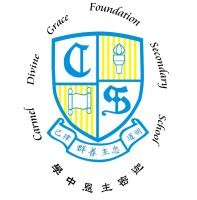| Language Policy |
While English has been used as the medium of instruction (EMI) in all classes for most subjects, we also strive to help students become bi-literate and trilingual. The school-based subject “Language Across the Curriculum” helps S.1 students adapt to EMI learning. To cater for learner diversity, English remedial classes are organised to consolidate students’ knowledge in English while a tailor-made enrichment curriculum is designed for S.1 to S.3 high-achievers to stretch their potential. Our Native-speaking English Teacher and local teachers organise various co-curricular and extra-curricular activities, as well as summer English Study Tours to provide students with ample opportunities to hone their language skills to be proficient users of English, and experience life and culture in English-speaking countries. Steps have been taken to improve students' Putonghua proficiency through S.1 and S.2 Putonghua lessons, some Chinese lessons taught in Putonghua and extra-curricular activities. Complementing these measures, another school-based subject “Reading Across the Curriculum” and lessons for extensive reading in Chinese and English have also been scheduled in the timetables of junior forms to promote the joy and importance of reading to learn. |
| Learning and Teaching Strategies |
The primary focuses of the junior form curriculum are to develop students’ competencies in Chinese, English and Mathematics, and to encourage students to read extensively, write plentifully and think creatively and analytically. There is a good interface between the junior and senior secondary curriculums. Two examples of such are our school-based junior Social Studies curriculum, which emphasizes the training of various generic skills and study skills, and the inclusion of language arts and text grammar in the formal and informal school-based English Language curriculums across all levels. In line with the curriculum reform “Learning to Learn”, teachers are making strides to adopt a student-centred and skill-focused pedagogical approach in order to develop students into lifelong learners. Furthermore, assessment for learning strategies have been developed across different subjects to promote learning and teaching effectiveness.<br>The promotion of STEAM education in our school aims at developing a solid knowledge base among students and enhancing their interest in STEAM-related subjects. STEAM elements are included in different science and technology subjects. Some examples include the learning of biotechnology, 3D printing, VR, mBot as well as Design and Make projects, is designed to nurture students’ creativity, collaboration and problem solving skills. Students can extend their learning through joining enrichment programmes and activities - the Robotics Team, the STEAM Club and STEAM Day. Students are also nominated to participate in STEAM-related competitions and have the chance to serve the community by sharing their learning outcomes with students of different schools. |
| School-based curriculum |
1. Electives: 2X and 3X. Mathematics (Modules 1 and 2), Physics, Chemistry, Biology, Economics, Geography, History, Information and Communication Technology, Chinese History, Business, Accounting and Financial Studies<br> 2. Curriculum highlights: S.1 Language Across the Curriculum, S.1 and S.2 Health Education Programmes, Junior Social Studies, Junior Reading Across the Curriculum and Senior Biblical Knowledge are school-based curriculums. |
| Approach to Catering for Learner Diversity |
Measures to cater for student diversity include:<br>1. Enrichment and remedial courses to cater for learners' differences;<br>2. Tailor-made school-based curriculums and teaching materials;<br>3. Homework Support Scheme;<br>4. Small class teaching in English Language (S.1-S.3) and Chinese Language (S.1) to cater for learning diversity;<br>5. High-achievers' classes in English Language and Mathematics (S.2-S.3). |
| Approach to Integrated Education |
The Student Support Working Group comprising Principal, Vice Principal, SEN Coordinator, Guidance Master, representative from Academic Committee and Student Counsellor provides suitable support for needy students to help them cope with learning needs and develop social skills. |
| Education Support for Non-Chinese Speaking (NCS) Students |
|
| Home-School Co-operation |
Every year, the Parent-Teacher Association organizes a series of activities such as parents group, seminars on parenting and other outdoor social activities. In addition, parents participate actively in school programmes like "Salute to Teachers", Sports Days, Swimming Gala and community services. All the above have fostered home-school collaboration. Parents and teachers view one another as partners in education and a caring community is formed around the students. |
| School Ethos |
Our teachers and students have a close rapport. Teachers frequently meet with students after school, helping them with their studies, sharing with them their concerns and worries, and guide them through adolescence. The Discipline and Moral Education Committee, Guidance Committee, National and Civic Education Committee and the School Social Workers launch programmes like the Big Brothers and Big Sisters Scheme, the S.1 Education Camp, Sex Education activities, exchange tours to the Mainland or other countries, etc. to instill in them self-discipline, correct values, a proper understanding of sex and high moral standards. In Morning and Weekly Assemblies and Health Education programmes, students learn about morality, family ties, emotions, interpersonal relationships and civic responsibilities, so that they may treasure their lives, respect others, and grow and mature. |
| School Development Plan |
1. Maximising students' learning outcomes through quality learning and teaching;<br>2. Promoting flourishing and enhancing students' sense of accomplishment through positive education. |
| Teacher Professional Training and Development |
In the establishment of teachers' learning communities, the school provides various professional exchange channels like peer observation, collaborative lesson preparation, sharing of good practices and lesson study for teachers. Every year, school-based staff training such as seminars, workshops and joint school conferences are held. We have established a close partnership with universities for tapping their professional support. |
| Life-wide Learning |
Our students can participate in extra-curricular activities classified into 3 major categories: academic, interest and service. On top of that, they also have the opportunities to realise their potentials by taking part in programmes such as Life-wide Learning Days, English Musical, Variety Show and Overseas Study Tours. Participating actively and enjoying themselves enormously in these activities, students have won many prizes and clinched numerous titles in a wide range of inter-school competitions such as language, sports, music, uniformed groups and STEAM. |
